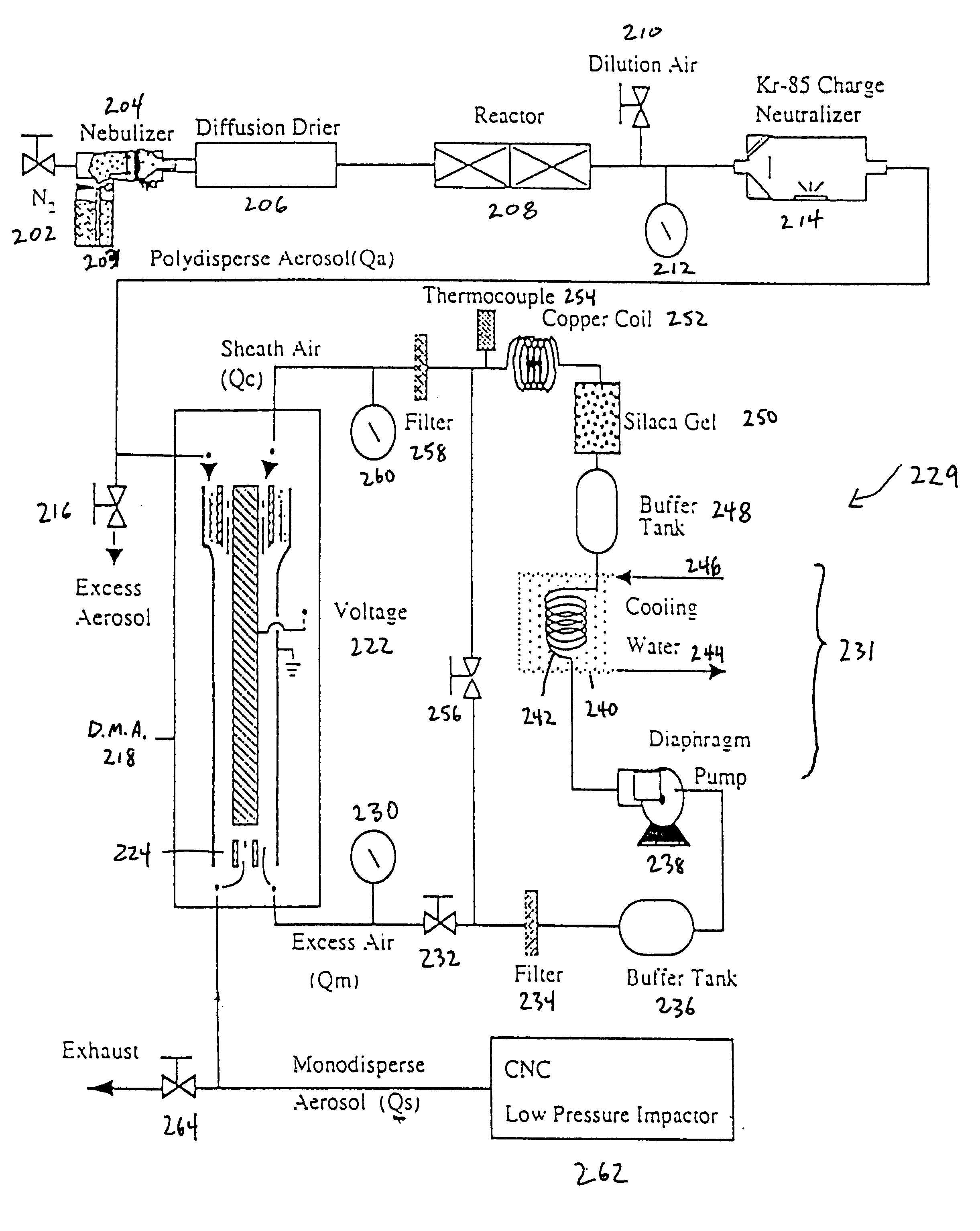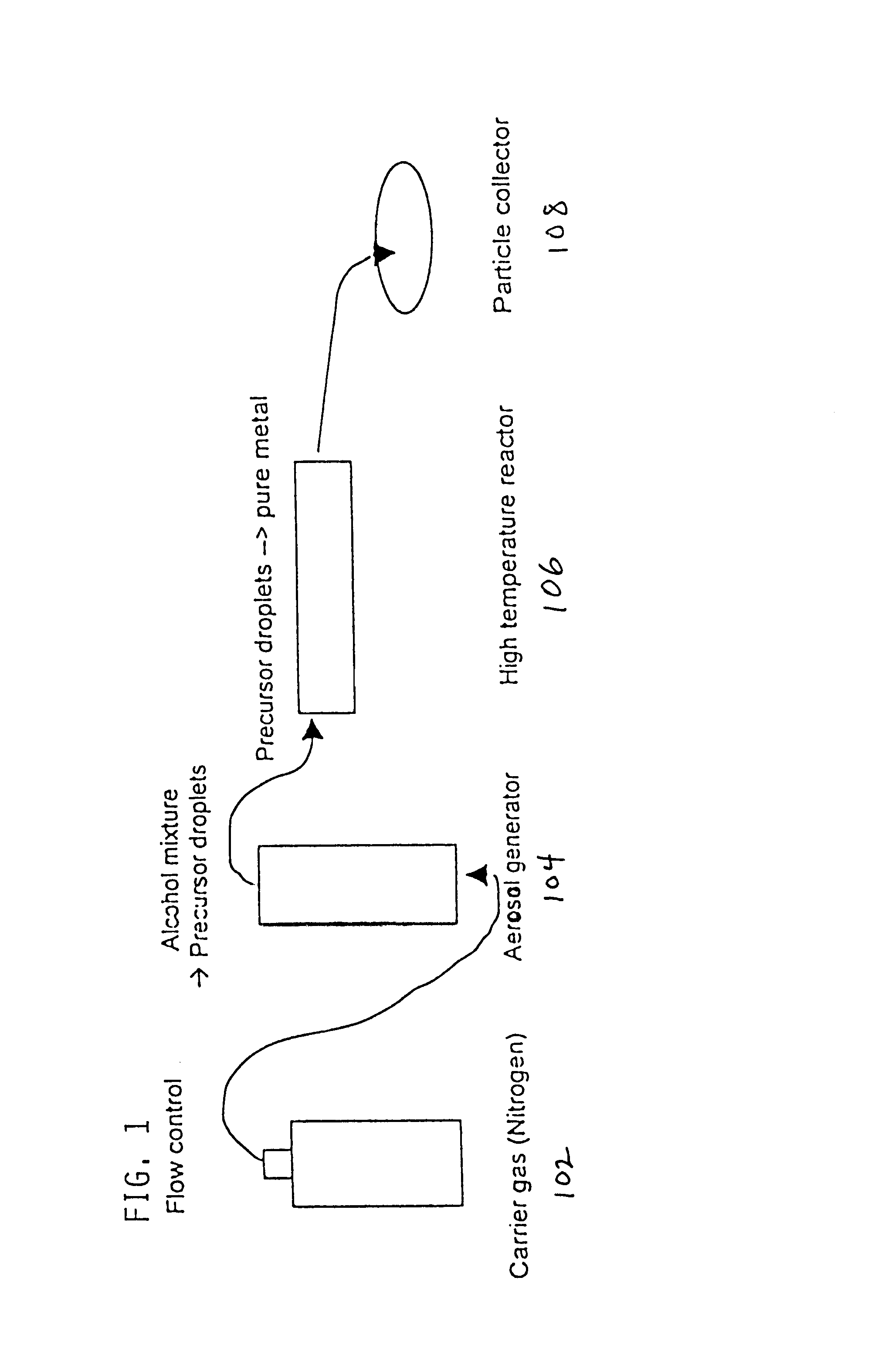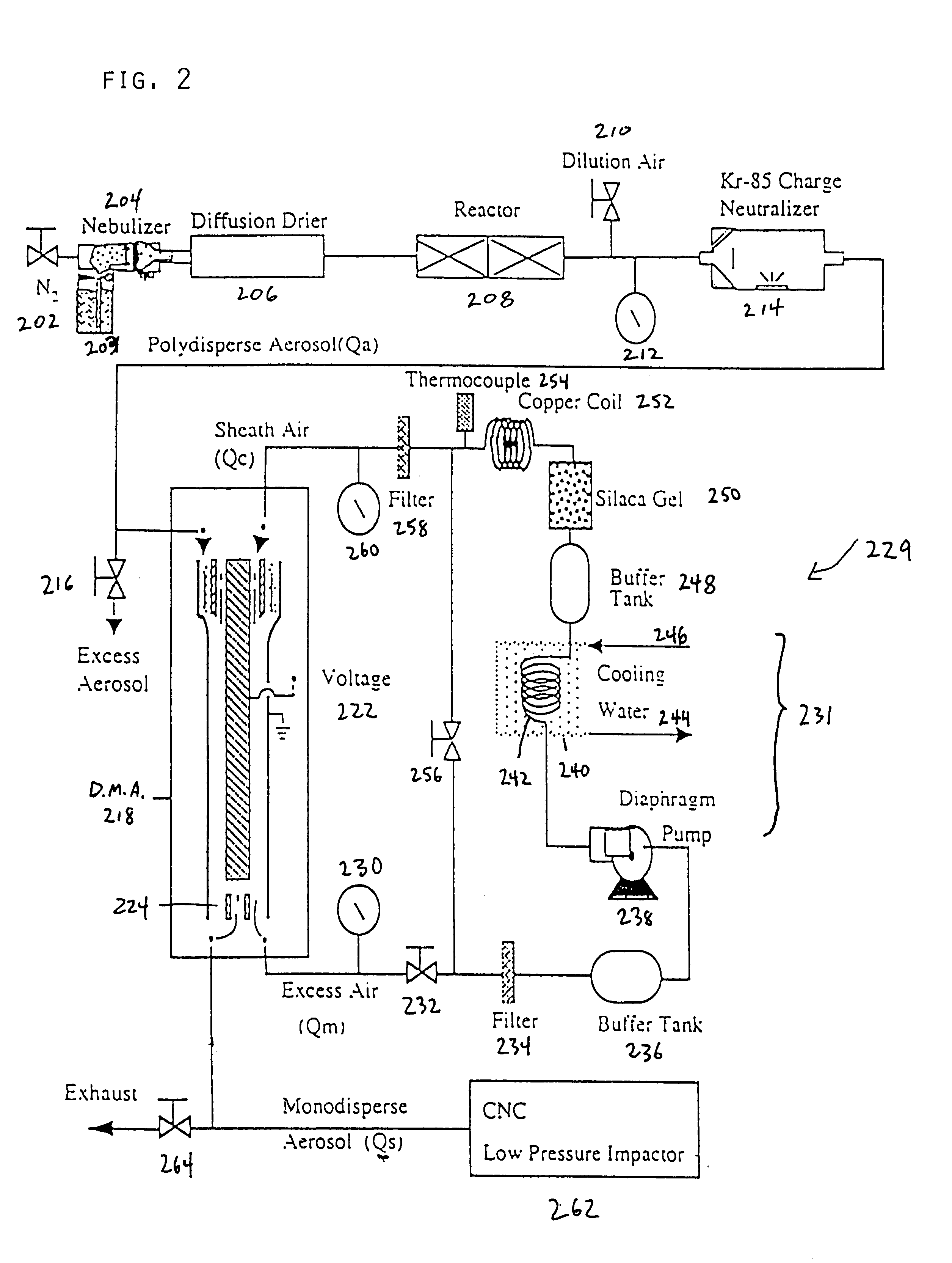Method of producing metal particles by spray pyrolysis using a co-solvent and apparatus therefor
a technology of spray pyrolysis and co-solvent, which is applied in metal-working apparatus, transportation and packaging, nanotechnology, etc., can solve the problems of difficult reduction of metal oxide, metal precursors, and metal oxide to form pure metal particles, and may be dangerous methods
- Summary
- Abstract
- Description
- Claims
- Application Information
AI Technical Summary
Benefits of technology
Problems solved by technology
Method used
Image
Examples
example 1
The spray pyrolysis system as depicted in FIG. 2, was then used to process a solution of 0.35 M of copper nitrate in a 10% ethanol, 90% water solution. The aerosol of the solution was heated at 600.degree. C. for 3.3 seconds, and the carrier gas used was nitrogen. FIG. 6B is a graph, and its associated data, depicting X-ray diffraction spectra of the particles formed by the spray pyrolysis system. A single material was experimentally found to have a 2-theta signature including angles of about 43.343.degree., 50.479.degree., 89.960.degree., and 95.157.degree.. This 2-theta signature sufficiently matches the known 2-theta signature of pure copper. Therefore, as experimentally confirmed, by using a co-solvent, the copper nitrate is reducible to solely pure copper particles.
example 2
A spray pyrolysis system as depicted in FIG. 2, was used to process a solution of 0.3 M of copper nitrate in a 10% ethanol, 90% water solution. The aerosol of the solution was heated at 300.degree. C., 450.degree. C., 600.degree. C. and 1000.degree. C. for about 1.5 to about 3 seconds, respectively, and the carrier gas used was nitrogen. FIG. 7B is a graph depicting X-ray diffraction spectra of the resulting particles in accordance with an embodiment of the present invention. As illustrated in the graph, pure Cu is solely produced not only at 1000.degree. C., but at the lower temperature 600.degree. C.
example 3
A spray pyrolysis system as depicted in FIG. 2, was used to process a solution of 0.3 M of copper acetate in a 10% ethanol, 90% water solution. The aerosol of the solution was heated at 300.degree. C., 450.degree. C., 600.degree. C. and 1000.degree. C. for about 1.5 to about 3 seconds, respectively, used was nitrogen. FIG. 8B is a graph depicting X-ray diffraction spectra of the resulting particles in accordance with an embodiment of the present invention. As illustrated in the graph, pure Cu is solely produced not only at 600.degree. C., but at the lower temperature 450.degree. C.
FIG. 9A is a scanning electron microscope image of pure copper particles formed from copper nitrate with a co-solvent at a temperature of 600.degree. C. in accordance with Example 2 of the present invention, whereas FIG. 9B is a scanning electron microscope image of pure copper particles formed from copper nitrate with a co-solvent at a temperature of 1000.degree. C. in accordance with Example 2 of the pre...
PUM
| Property | Measurement | Unit |
|---|---|---|
| diameter | aaaaa | aaaaa |
| flow rate | aaaaa | aaaaa |
| flow rate | aaaaa | aaaaa |
Abstract
Description
Claims
Application Information
 Login to View More
Login to View More - R&D
- Intellectual Property
- Life Sciences
- Materials
- Tech Scout
- Unparalleled Data Quality
- Higher Quality Content
- 60% Fewer Hallucinations
Browse by: Latest US Patents, China's latest patents, Technical Efficacy Thesaurus, Application Domain, Technology Topic, Popular Technical Reports.
© 2025 PatSnap. All rights reserved.Legal|Privacy policy|Modern Slavery Act Transparency Statement|Sitemap|About US| Contact US: help@patsnap.com



